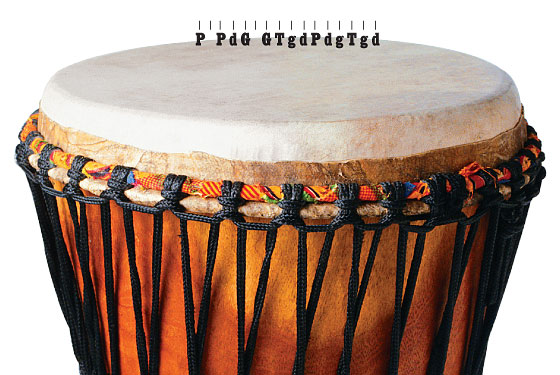
A hippie-era use of traditional African instruments has become a 21st-century political issue at Occupy Wall Street, where organizers, neighbors, and freedom-loving bongoists have been fighting over the protest’s drum circle. Here, a primer on a means of expression that’s impossible to ignore.
CROSSING THE ATLANTIC
Accounts of African drumming’s popularity in the U.S. often cite Nigerian artist Babatunde Olatunji’s 1959 Columbia Records album Drums of Passion, which has sold over 5 million copies, as a genre-launching release.
PERCUSSIVE PROTEST
Drum circles started popping up in America around that time; history and social-studies professor Robert Cohen of NYU points to one early example in a 1964 memo recapping a meeting of the University of California at Berkeley dean of students’ office regarding on-campus Free Speech Movement protests: “The problem of bongo drums and other noise making in the area of Ludwig’s Fountain was discussed.”
LAWN MOWERS FOR JUSTICE
A drum circle of 40 or so people, says Jim Greiner of Hands-On! Drumming Events, can reach 95 decibels, a level of noise that is also achieved by lawn mowers, thunder, and subway trains.
DIFFERENT STROKES FOR DIFFERENT FOLKS
Occasions for the traditional use of African drums, as delineated in social anthropologist Rodney Needham’s seminal 1967 paper “Percussion and Transition,” include war declarations, lunar rites, calendrical feasts, births, marriages, sacrifices, and the return of headhunters. Contemporary “drum-circle facilitators” advertise their services for corporate retreats and family reunions.
OPINIONS VARY
Participation in therapeutic drum circles “appears to attenuate and/or reverse specific neuroendocrine and neuroimmune patterns of modulation associated with the classic stress response,” wrote Dr. Barry Bittman in the journal Alternative Therapies. “Drummers are cool. Until you put them in a circle,” said comedian Demetri Martin. And one OWS protester carried a sign reading “I Hate Drum Circles But I Hate Corporate Greed More.”
MAKING NOISE
A diagram of a typical djembe drum beat is above. (The West African djembe drum, often covered in goatskin, is the most commonly used instrument in drum circles. Others include bongos, congas, bougarabous, and doumbeks.)
How to read it:
Each line is a half-beat.
G = “gun,” bass beat with right hand.
d = “do” (pronounced doe), rim beat with left hand.
g = “go,” rim beat with right hand.
T = “ta,” slap beat with left hand.
P = “pa,” slap beat with right hand.
Have good intel? Send tips to intel@nymag.com.